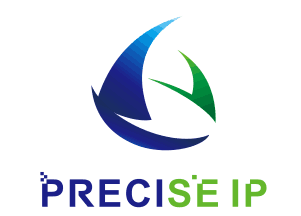Trademark protection in Hong Kong
Trademark Territorial Protection
The trademark registration system of Hong Kong provides territorial protection. Hence, trademarks registered in the Mainland China do not automatically receive protection in Hong Kong. If you want your mark to be protected in the Mainland China and Hong Kong, you should apply for registration in both places.
How to classify the goods / services?
Your application must include a list of all goods and services which you want to register your trademark with. You must list the goods and services in the class(es) they fall in. You should also state the number of class(es) they fall in. You may find details of the Nice Classification at http://www.wipo.int/classifications/en.
Examination process
There are four stages in the process of examining an application for registration:
●deficiency checking
●examination against the requirements of the Trade Marks Ordinance
●acceptance and publication for opposition
●registration and issue of certificate of registration.
If there are no deficiencies in the application and no objections to the trade mark then the whole application procedure can take as little as 6 months from receipt of application to registration.
The first stage -Deficiencies Checking
Before beginning to examine your application, we will carry out a thorough check of the application form(s) and any attachments. This is to see if all the necessary parts of the form(s) have been filled in, if they are correct and if any required information is missing. If any required information is missing, we will ask you to provide the information to remedy the deficiencies within two months from the date of Registry's notice. Some amendments are very minor and will not affect the filing date of your application, e.g. the class number of the applied for goods. Others are more important and will therefore affect the filing date, e.g. you have not provided the representation of your trademark. Also, major changes to the application will not be accepted, for example, changes to the representation of the trademark.
If everything is in order your application will proceed to the next stage (Search and examination).
The second stage -Search & Examination
After the deficiencies checking has been completed and all is found to be in order we will conduct a search of the trademarks records to see if the same or similar trademark has already been registered or been applied for by another trader in respect of the same or similar class of goods and services.
We will also see if the trademark satisfies the registration requirements laid down in the Trade Marks Ordinance. Some of these criteria are listed in the "Before you apply" section in the "How to apply to register a trademark in the Hong Kong SAR" although this is not a comprehensive list.
- Is it distinctive?
Does your trade mark stand out from the crowd? Does your trade mark, be it a logo, word, picture, etc. clearly set your goods and services apart from those of other traders? We will object to the mark if we do not think it does. We will consider invented words or everyday words that are in no way associated with your line of business as distinctive. For example the invented word "ZAPKOR" is distinctive for spectacles and the word "BLOSSOM" is distinctive for medical services. - Is it a description of your goods and services?
If your trade mark describes the goods and services or shows the quality, purpose, quantity or value of them, then we are likely to object to the mark. Similarly we are likely to object to the use of geographical name in a mark. For example, we would for the above reasons object to the following marks: "QUALITY HANDBAGS", "FRESH AND NEW" and "NEW YORK FASHION". - Is it a well known term in your line of business?
If your trade mark is a well known term or representation in your line of business we would object to it. For example "V8" for vehicle engines.
The examiner will then issue an opinion in writing which will either lay out the grounds for objection to the mark or confirm the mark is acceptable for registration.
l Objections
If the requirements for registration are not met we will object to the mark. You, the applicant, have 6 months in which to meet the requirements. A further 3 months extension may be granted.
l How to overcome objections
We will indicate in the opinion why the mark does not meet the requirements for registration and may suggest ways of overcoming the objection if we think it is possible to do so.
l If the objections remain
Even if you have tried to overcome the objections made in the initial opinion we may still find that the requirements for registration have not been met and will issue a further opinion indicating these findings. The further opinion will be issued after expiry of the 6-month period specified in the initial opinion. At this stage, if you still wish to pursue your trade mark application, then you have 3 months from the date of the further opinion to satisfy the registration requirements or call for a hearing. You may ask for an extension of this period only in certain circumstances specified in the Trade Marks Rules e.g. where you need additional time to obtain the consent of the owner of an earlier trade mark.
l Hearing
If you call for a hearing, all the evidence for and against the trademark will be considered at a hearing, and a decision will be issued by a hearing officer.
The third stage -Announcement of application details and objection to registration
Publication of Trademark
Once your trademark has been accepted for registration, it is published in the Hong Kong Intellectual Property Journal at http://www.ipd.gov.hk/eng/ip_journal.htm.
Opposition to your Trademark by a Third Party
Anyone can view your trademark in the Hong Kong Intellectual Property Journal and lodge an opposition to it. They have to file an opposition notice within the 3-month period beginning on the publication date. As the applicant, you may withdraw your application or respond to the opposition by filing a counter-statement. Both parties are given the opportunity, within certain time limits, to file evidence in support of the application and opposition. When all the evidence has been received, a hearing will take place before a hearing officer who then makes a decision. If you withdraw your application or lose in the opposition proceedings, you may have to pay towards the other party's costs.
The fourth stage -Registration
Once your trademark has been accepted for registration, the Registrar of Trade Marks will enter the details of your trademark into the trademarks register and you will be issued with a certificate of registration. Notice of the registration will be published in the Hong Kong Intellectual Property Journal and the registration of your trademark will date back to the filing date of your application. That means as the owner of a registered trademark, your rights take effect from the filing date of the application.
Differences among Company Registration, Business Registration and Trademark Registration
Company registration, business registration and trademark registration in Hong Kong serve different purposes. They are regulated by different laws and registration systems administered by different government departments. The Companies Registry is responsible for providing services for the incorporation of local limited companies and the registration of non-Hong Kong companies which were incorporated outside Hong Kong and have established a place of business in Hong Kong.
The Business Registration Office is responsible for registering businesses carried on by an individual, a partnership, a local limited company or a non-Hong Kong company.
The Trade Marks Registry under the Intellectual Property Department is responsible for providing trademark registration services to members of the public under the Trade Marks Ordinance (Chapter 559, Laws of Hong Kong) and the Trade Marks Rules (Chapter 559A, Laws of Hong Kong).
A company name registration at the Companies Registry or a business name registered with the Business Registration Office is not the same as a trademark registration at the Trade Marks Registry. A business or company name registration is not an indication of trademark rights.
Well-known marks
A well-known mark can be protected by registration in the same way as other marks. There is no separate category of 'well-known mark registration'.
Infringement of a well-known mark extends to use for dissimilar goods or services, if the use takes unfair advantage of or is detrimental to the distinctive character or repute of the mark. The owner of a well-known mark, even if he does not carry on business in Hong Kong, is entitled to an injunction against an infringing use of the mark for identical or similar goods which is likely to cause confusion. Defensive trade mark protection (for exceptionally well-known marks) is available.
Strategies- Protecting trade marks in Hong Kong and Mainland China
- Adopting a mark that is clearly different from and that will not infringe other owners' marks. Infringement of a well-known trademark extends to use of the mark or a similar mark for dissimilar goods, so you may be liable for infringement even if your product is very different.
- Registering your trade mark here in Hong Kong and in the Mainland where there is a separate system of registration and protection. Registering your mark in the Mainland does not automatically give you protection in Hong Kong.
- Registering a mark in Chinese characters (or a translation or transliteration) for use locally to complement your mark and to give it broader appeal and protection.
- Registering your mark as soon as possible to ensure it is available for your business use and you can take immediate action against infringement.
- Putting in place a structured licensing system, if you intend to license the use of your mark.
- Continuously monitoring the on-line Hong Kong Intellectual Property Journal (www.ipd.gov.hk/eng/ip_journal.htm) for applications to register marks likely to cause confusion with your mark and taking action to oppose them.
- Taking action under the Trade Marks Ordinance, if infringing activity is taking place in Hong Kong.
- Taking action for passing off against damage to your business goodwill and reputation in Hong Kong for your goods or services.
- Reporting the infringement immediately to Customs and Excise Department, Intellectual Property Investigation Bureau, if infringing activity is taking place in Hong Kong. You will need to provide Customs and Excise Department with evidence that you own the trade mark or copyright and proof of the alleged infringement:http://www.customs.gov.hk/en/enforcement/ipr_protection/index.html
- Taking administrative or legal action under the law in Mainland China if the infringing activity is in the Mainland. If a Hong Kong company uses your trade mark in its name, as a front for infringing activities in the Mainland, you can take steps under Mainland law against the company's infringing activities.
- Most importantly, taking specialist IP advice from an IP lawyer or agent on all aspects of your IP rights, including copyright, trade mark or registered design, which may protect your products in other ways.
- Taking specialist advice on other business safeguards, including registering your trade mark, trade name and company name as domain names to protect them on the Internet. Hong Kong Domain Name Registration Company Limited (http://www.hkirc.hk) is a non-profit company that administers the registration of Internet domain names under “.hk” country-code top-level domain.
Online search
The IPD provides a free online search service at http://ipsearch.ipd.gov.hk, through which you may check information on registered trademarks or trademark applications, trademark registrants or applicants, and people or companies that are licensed to use the trademark in Hong Kong.


